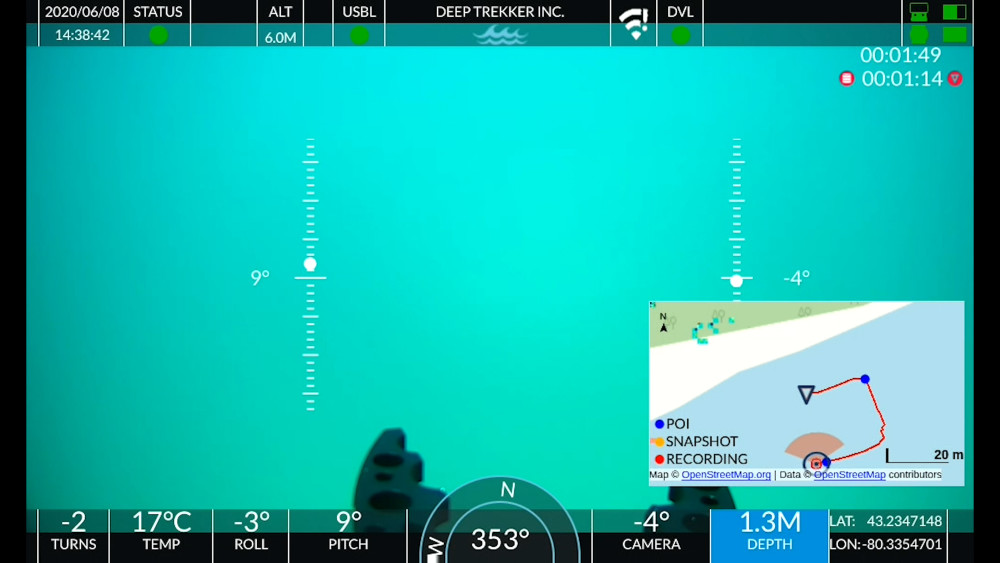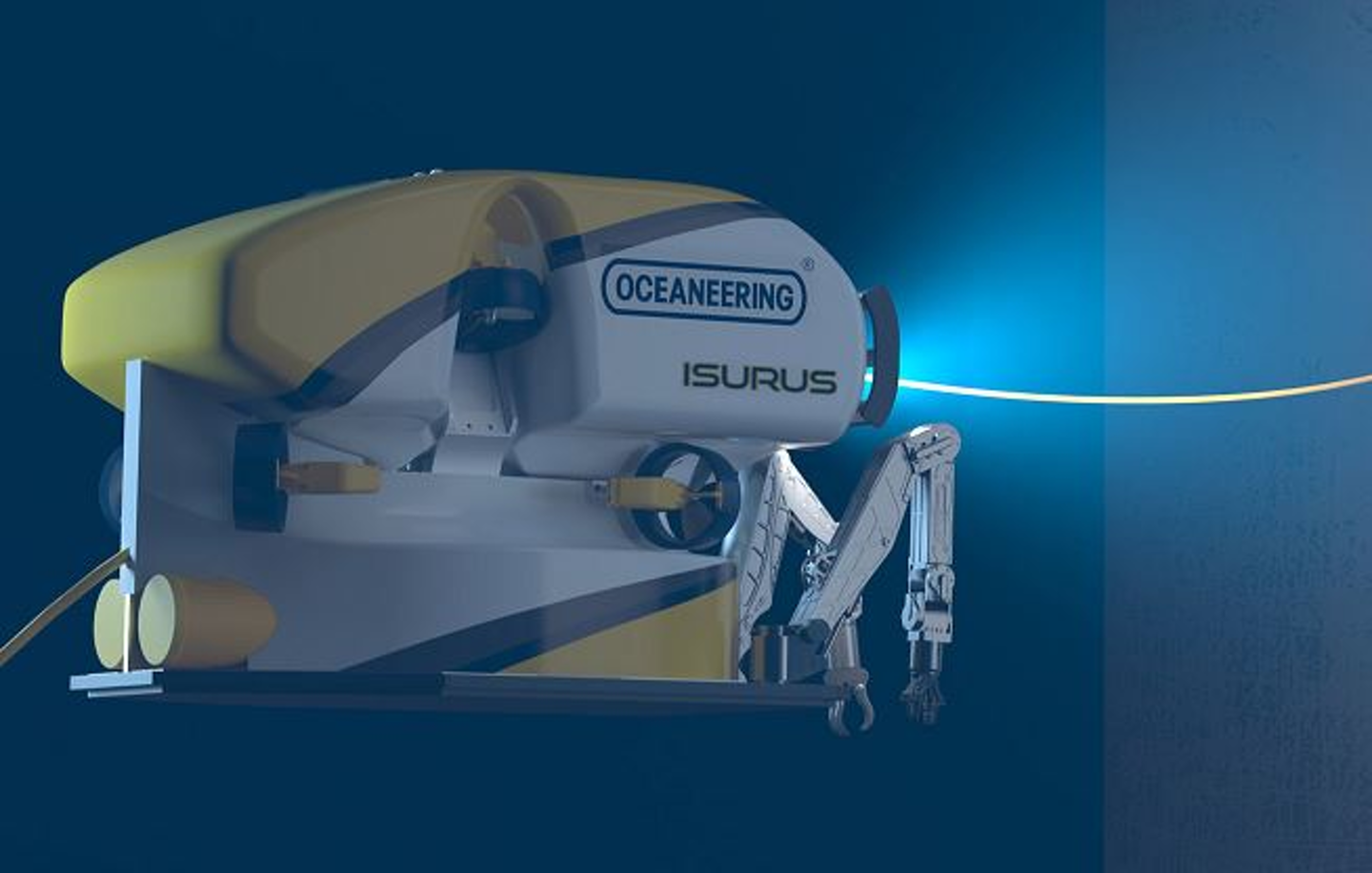Home › Forums › ROV › ROV Employment Discussion › Free swimmer
- This topic has 11 replies, 5 voices, and was last updated 8 years, 2 months ago by
Deep Trekker.
-
AuthorPosts
-
January 26, 2016 at 5:47 pm #7257
Steve
ParticipantHi,
Thanks for the pointers advice on fish farms ops.
Next Q…I’m used to operating TMS systems, but any advice for a free swimmer? I believe the tether is neutrally buoyant, but would you use a clump weight? Or floats to help maintain where the tether is when it’s running down from the surface?January 27, 2016 at 1:39 am #36398Etienne Demers
ParticipantHello Archie,
to get an educated response we need to know a bit more about your variables.
Where will the ROV launch from, any ship thrusters nearby? What kind of crane are you using, operating depth, current expected, type of ROV, etc, etc.
Cheers,
E.January 27, 2016 at 3:19 pm #36400Steve
ParticipantMultiple places really. Small boats, harbour walls, full size vessels, barges etc etc. I understand the need to keep away from thrusters etc as per normal but wondered if folk had tried a clump weight with an eye for the tether to run through or floats on it instead?
It’s a small inspection class ROV but quite a capable one, up to 4kts.
Will be mostly inshore stuff but some Northsea and harbour environments also. Curious about the clump weight ideaJanuary 27, 2016 at 11:25 pm #36402Etienne Demers
ParticipantOK I’ll just give you my 2 cents on the clump weight idea then.
Considering the size of vehicle you are talking about the tether will be small and malleable.
The primary reason I would consider using a clump weight is to divert away from a thruster or obstruction but I would only do this if I had no other choice. I would seriously question the necessity of putting my system in that position in the first place…
It’s a double edge knife. the idea seems great and has been done before but there is no way to ensure the tether will not build up above the clump weight causing an excess amount to float around shallow increasing the chances of entanglement with structures, thrusters, etc.
The tether can build up there because your ROV is not pulling fast enough VS the surface winch paying out, you have slack tether and the current is pushing it, etc… Note that current is usually stronger at surface… This will be worst if your tether is neutral or buoyant.
If you do want to try it out. You should consider buying some plastic rods (acetale preferably) drill in the center, put ss pipe in and mount 4 rollers in a square shape. The rollers and "hole for the tether" should be as big as reasonably practical but the rollers should be close vertically to prevent damage to your tether. (check your tether specification for the minimum bend radius) You can build a simple frame with aluminium and use scuba diver weights to mount below the rollers. Put an eye bolt on the side and use whatever rope you fancy. The rope has to be offset to one side else you will have it entangling with your tether.
I’m sure different folks have different opinions the truth is the requirements and results vary depending on the working conditions and scenarios.
Rule of thumb is your tether is best underwater/on the seabed where you have some control versus on the surface where you have none. Therefore, free flying is definitely better with a slightly negative tether. I would use floats near the ROV to compensate the weight and keep the tether off the seabed only if the seabed is soft to keep it from destroying the visibility. Else I would let it be because it is easier to manage.
Bottom line is don’t "add" complications unless their is a need. IE don’t put a clump weight cause it seems like a good idea…
Hope this helps.
Cheers,
E.January 31, 2016 at 5:24 pm #36405Steve
ParticipantThanks Chewy, great advice. I’m new to free swimmers ( used to XLX family and sub Atlantic in general) and I’m about to start on some aquaculture work away from O&G for a while. I had mulled over the clump weight idea but agree that there is a risk that the tether could gather up, especially as it’s just me operating ( ie no tether monkey). I’m quite prepared to go and see how it goes and adapt as necessary, but my prior military background still creeps in every now and again and suggests to me to seek advice from those whom may have more experience. So, thanks for your advice, it will be logged. 👍🏻
February 1, 2016 at 4:09 am #36406Etienne Demers
ParticipantNo problem. If you have any other questions let me know.
Cheers,
E.February 2, 2016 at 3:00 pm #36407Craig Thorngren
ParticipantArchie,
Having worked with small ROV’s that can do 4kts for more than 14 years (I’m pretty sure I know what system you are using…) I can tell you there are really only two times we’ve ever used clump weights. The first is if you are operating in a strong current and you want to reduce the drag on the ROV (i.e. you put the weight 20M back from the rov, this is your ‘expedition’ length. Now you aren’t affected by the tether drag from the weight to the surface, only what is between the weight and the ROV). The second is when you don’t want part of your tether rubbing up against something (say a hull).
If you are inside a fish farm net inspecting the nets or removing the morts, there really is no reason to clump weight the tether. If you have any questions feel free to PM me…Chief
February 4, 2016 at 9:58 pm #36404Trev
ParticipantHi, just wondering how you are going to remove morts from cage?
February 4, 2016 at 9:59 pm #36403Trev
ParticipantHi, just wondering how you are going to remove morts from cage?
February 5, 2016 at 12:38 am #36401Craig Thorngren
ParticipantBokkie,
The way I’ve done it is to grab them with the manipulator and either bring them all the way out or if you have a net with a line that you drop them into, then haul the net out…
Chief
February 5, 2016 at 2:02 pm #36399Steve
ParticipantChief, out of curiosity, what ROV so you think it is?
I’m only going to be doing survey and cleaning. No inside cages stuff …at this point any way! 😀February 5, 2016 at 3:01 pm #36397Deep Trekker
ParticipantHi all,
Bookie and others, if you’re interested in how to remove morts from the cage Deep Trekker has recently released a mort retrieval system, which has extensively been tested and proven in fish farms.
Because the ROV can rotate 180 degrees, you scan scoop up the morts really easily to bring them up to the top, or push them to the lift up system.
You can check it out here, there is a video as well:
http://www.deeptrekker.com/product/mort-retrieval-system/ -
AuthorPosts
- You must be logged in to reply to this topic.



